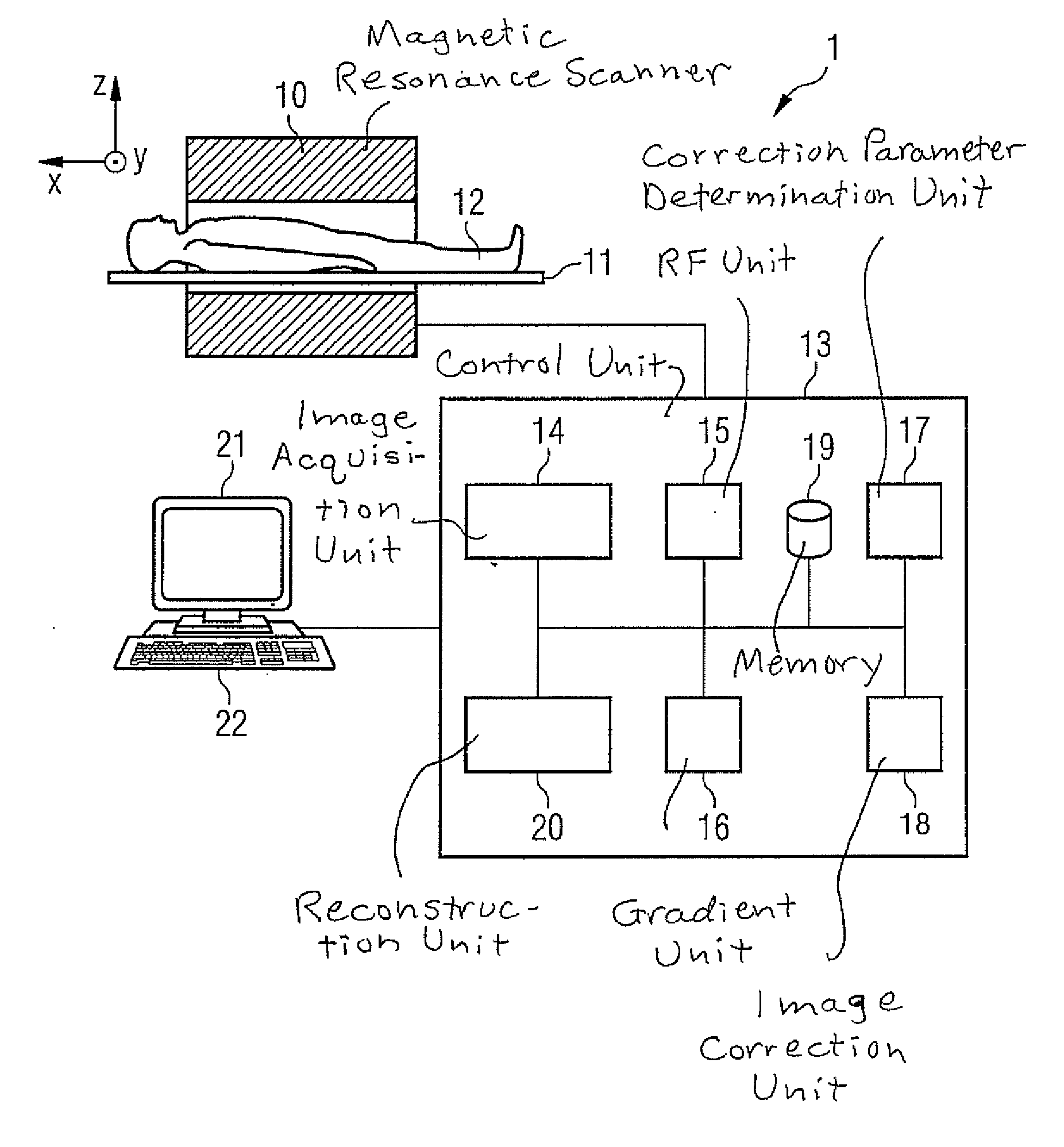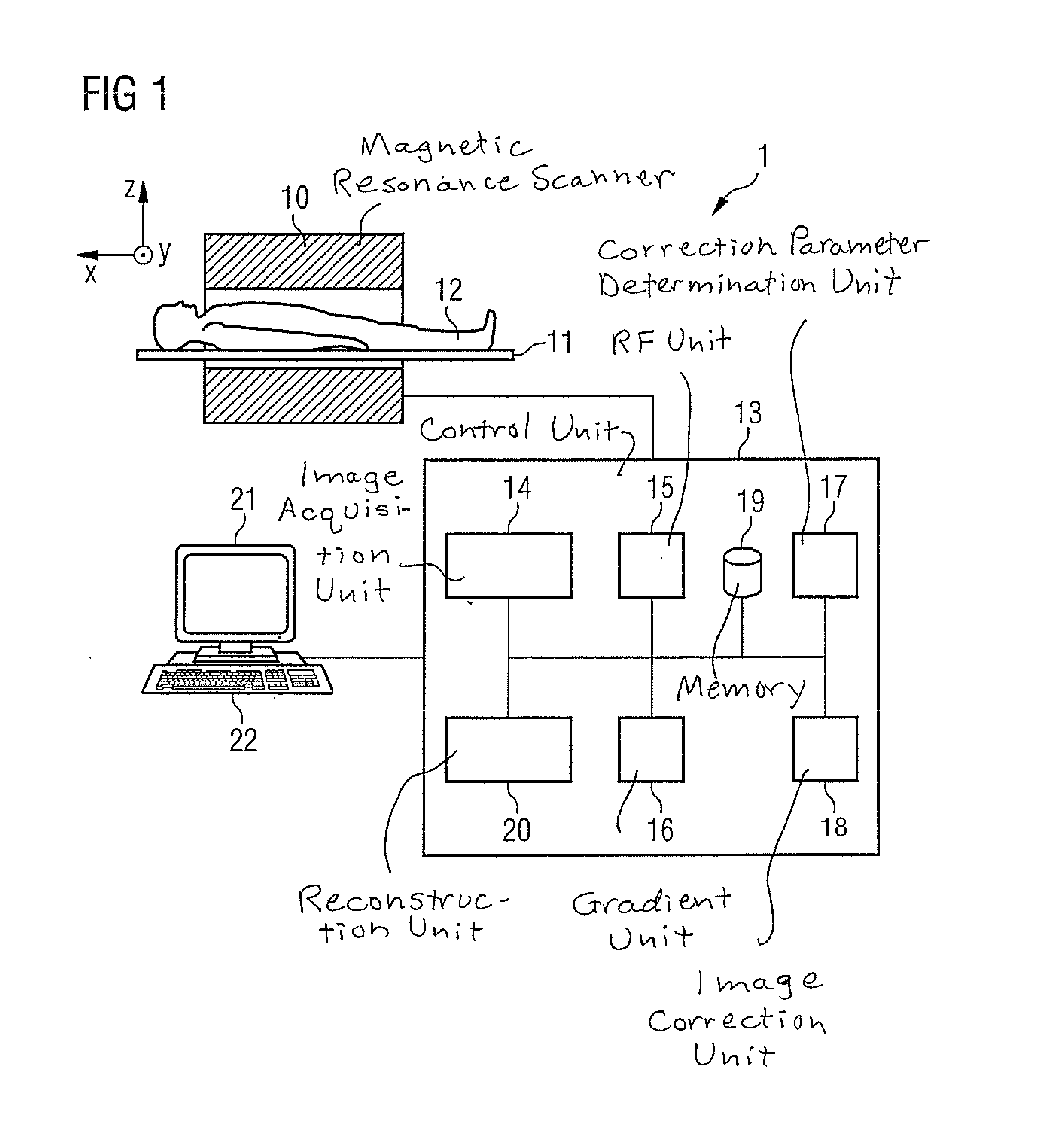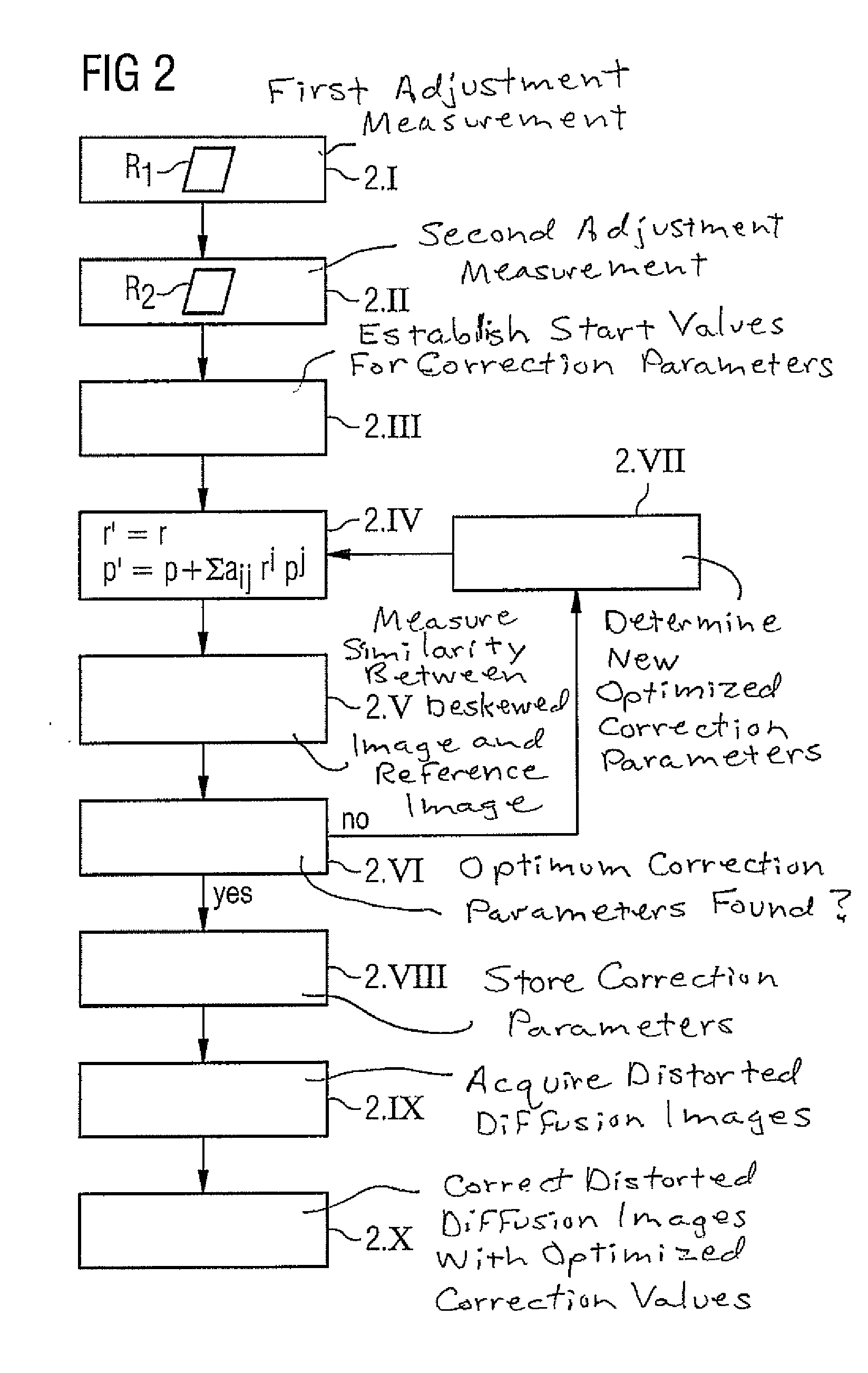Method and magnetic resonance system to reduce distortions in diffusion imaging
a magnetic resonance system and imaging technology, applied in the field of magnetic resonance system to reduce can solve the problems of image distortions having an appearance, incorrect association of pixel information, errors (or at to a reduced precision) of calculated parameters, etc., and achieve sufficient robustness and quick effect of reducing distortions in diffusion imaging
- Summary
- Abstract
- Description
- Claims
- Application Information
AI Technical Summary
Benefits of technology
Problems solved by technology
Method used
Image
Examples
Embodiment Construction
[0046]A magnetic resonance system 1 according to the invention is presented in a rough schematic in FIG. 1. It includes the actual magnetic resonance scanner 10 with an examination space or patient tunnel into which an examination subject 12 on a bed 11 can be driven. The magnetic resonance scanner 10 is equipped in a typical manner with a basic field magnet system, a gradient coil system and a transmission and reception antenna system which, for example, includes a whole-body coil permanently installed in the magnetic resonance scanner 10 and possible additional local coils that can be variably arranged on the examination subject 12.
[0047]The MR system 1 furthermore has a central control unit 13 that is used to control the entire MR system 1. The central control unit 13 has an image acquisition unit 14 for pulse sequence control. In this the sequence of RF pulses and gradient pulses is controlled depending on a selected imaging sequence. The central control unit 13 has an RF unit 1...
PUM
 Login to View More
Login to View More Abstract
Description
Claims
Application Information
 Login to View More
Login to View More - R&D
- Intellectual Property
- Life Sciences
- Materials
- Tech Scout
- Unparalleled Data Quality
- Higher Quality Content
- 60% Fewer Hallucinations
Browse by: Latest US Patents, China's latest patents, Technical Efficacy Thesaurus, Application Domain, Technology Topic, Popular Technical Reports.
© 2025 PatSnap. All rights reserved.Legal|Privacy policy|Modern Slavery Act Transparency Statement|Sitemap|About US| Contact US: help@patsnap.com



